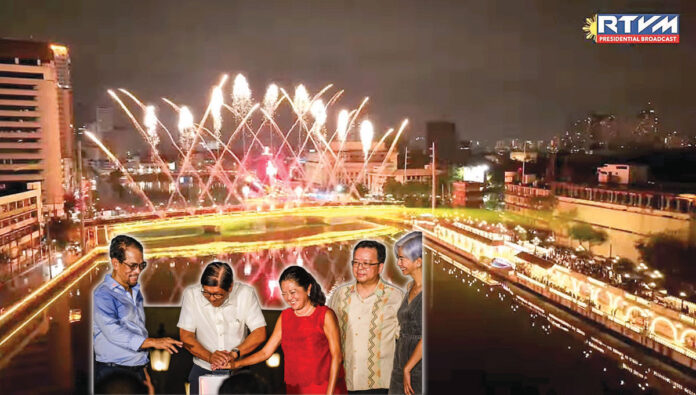President Ferdinand Marcos Jr. on Saturday evening described the historic Jones Bridge as a symbol of national reflection, as he led its ceremonial lighting to mark the launch of the Binondo Chinatown Revitalization Project.
“In times like these, when everything can feel loud and fast and confusing, I believe what we need is right here,” Mr. Marcos said.
“A place as simple as a bridge or a street that tells us to pause and to reflect on who we are and what we share as a nation,” he added.
The event, held at the foot of the century-old bridge in Manila, also commemorated the 50th anniversary of diplomatic relations between the Philippines and the People’s Republic of China.
Among the dignitaries present were Chinese Ambassador Huang Xilian, members of the Diplomatic Corps, First Lady Liza Araneta-Marcos, and officials from both the public and private sectors.
Jones Bridge, which connects the historic districts of Binondo and Escolta, was lit in a renewed glow as part of a broader effort to restore the cultural and historical character of the area.
The President described the project as part of a national mission to preserve heritage and revive urban districts.
“This is what the Chinatown Revitalization Project is all about… It is about restoring Binondo and reaffirming its cultural and historical significance to our shared heritage,” Marcos said.
He recounted his childhood memories of Binondo’s iconic culinary landmarks, evoking the enduring appeal of familiar street foods, dumplings, lumpia, hopia, and the vibrant energy of its narrow lanes.
But beyond nostalgia, the President emphasized the need for continuity between the past and the future, urging younger generations to reconnect with Manila’s historical quarters.
“How can we know our history and culture if we do not know and experience them ourselves?” Marcos asked.
The revitalization of Binondo is part of a larger national effort that includes projects like the Pasig River Urban Development initiative, aimed at rehabilitating one of Metro Manila’s key waterways.
These programs, Mr. Marcos said, are meant to build a “Bagong Pilipinas,” or a New Philippines, by combining heritage conservation with economic revitalization.
He also acknowledged the contributions of the Federation of Filipino-Chinese Chambers of Commerce and Industry Inc., the local Binondo community, and various government agencies involved in the initiative.
“Let us finish Phase II, as we transform Ongpin and Escolta into cultural and economic hubs. We will bring back their golden years so that we can relive them,” Marcos concluded.







